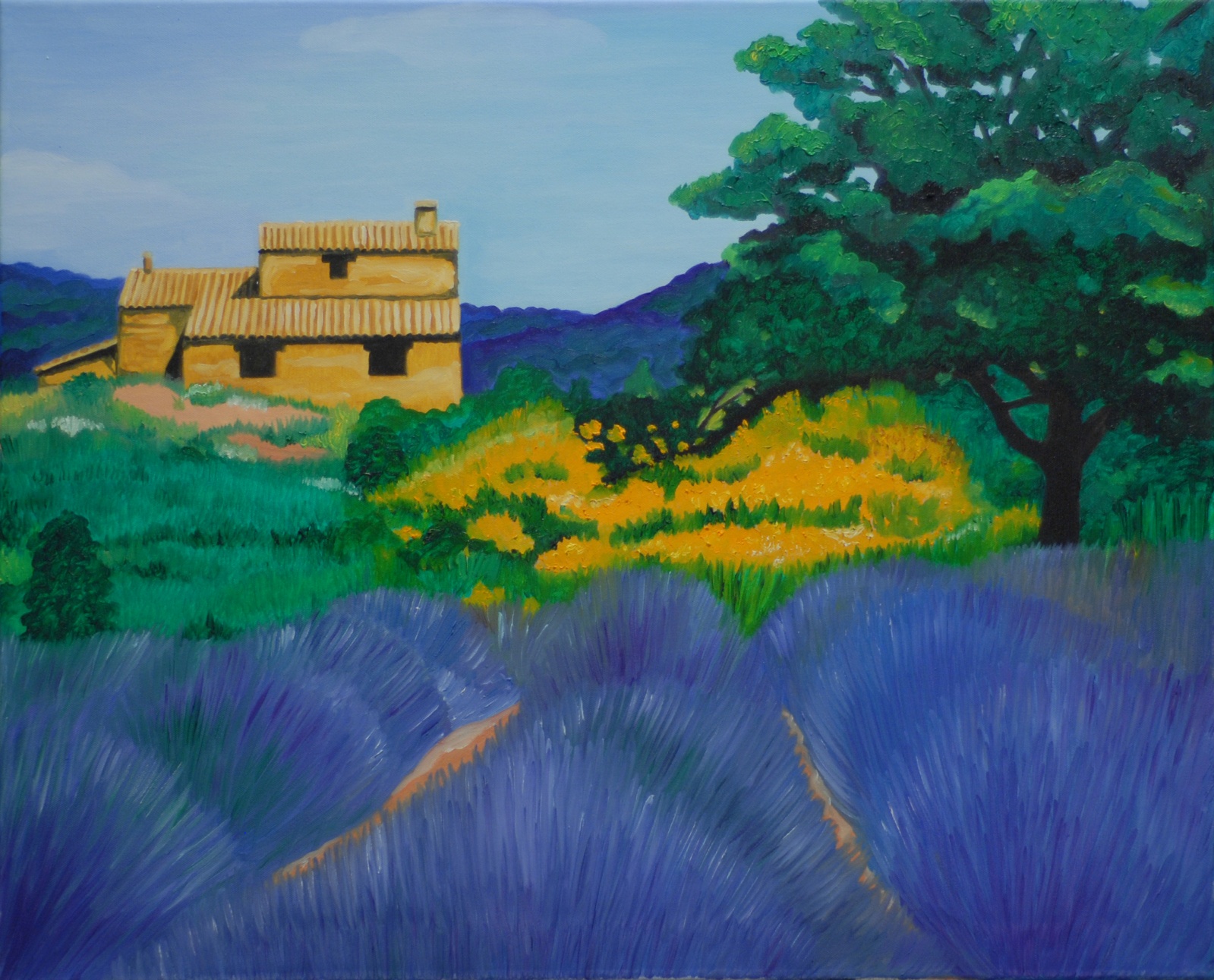Mike Muir and His Paintings
By David Kozinski
Mike Muir joined the Manayunk-Roxborough Art Center (MRAC) in September 2010 and soon became its Vice President and Treasurer. He wears a number of other hats as well, including belonging to each of the Manayunk-Roxborough Artists’ Co-Op’s task teams (Curators, Publicity/Marketing, Curriculum, etc.), writing grant proposals, organizing and running fundraisers, and leading strategic planning meetings. Earlier this year, Muir’s wit and easy-going sense of humor served him well as M.C. for a roast of Peter Krok. The occasion was Krok’s 25th anniversary as MRAC’s Humanities Director. Along with past MRAC President Mark Elliott, current President Ron Howard, and other dedicated volunteers, Muir has brought his many and varied talents to reorganizing the non-profit art center and keeping it operating and adapting to new challenges.
Muir has been a regular and enthusiastic contributor to MRAC’s monthly art exhibits and has shown some of his more than 1500 pen and ink drawings. He is also an avid writer, having completed 17 screenplays. This article will concentrate on his oil paintings.
Muir began painting in 1999 but has been drawing all of his life. He recalls, “sitting in my grandfather’s armchair drawing pictures of horses and trains.” He has created a series of oil paintings depicting lighthouses that stand atop the sheer cliffs of Scotland’s coast. Muir, who was born, and spent his first ten years, in “bonnie Dundee”, signs his paintings using his father’s surname – Byrne – as a way of honoring his memory. When Muir was only a few months old, his 24-year-old father was lost at sea. His British Navy Destroyer, HMS Mahratta, was sunk by U990, a German submarine operating with the “Werewolf” wolf-pack group in the North Sea, the hazardous body of water above which Dundee is perched. “Scottish Lighthouse 1” and “Scottish Lighthouse 2” convey a sense of the land as fortress, while Muir’s choices of color moderate the viewer’s sense of the cliffs, rendering them as both inhospitable and starkly beautiful.
The lighthouse paintings are not Muir’s only works to include biographical elements. Many of his paintings refer to places he has visited and where he, his wife Marie, and their children have lived. During a career in business that saw him recruited and promoted by a number of companies, Muir was named V.P. of Strategic Planning and Marketing for Avco, Canada and Chief Operating Officer, Executive Vice President, at Diversified Title and Escrow, among other accomplishments. Business relocation and travel took him to the corners of the earth, including Australia, New Zealand and Hong Kong as well as Canada, Orange County, California, Spain, Sweden and the United Kingdom. Wherever he was, Muir never stopped drawing, a practice that undoubtedly contributes to the compositional strength of his paintings.
The artist’s oil painting, “Provence Farmhouse”, exemplifies his mastery of the relationship of color and form. A lush field of lavender occupies the landscape’s foreground and echoes the dark blue of the mountains in the background. The corrugated roof adds texture to the farmhouse, located in the mid-foreground and to the viewer’s left, and its amber hues contrast with the blues and greens of the foliage, mountains and sky. “Tuscany Villa” presents the rustic building standing, somewhat off-center, behind a row of the elongated pine trees that are closely associated with the region. An unpaved driveway leads the eye toward the house while a ridge of blue mountains in the background emphasizes the structure’s elevation.
Another Muir landscape, “Cypress Point – 17 Mile Drive” features the tree that inspired the logo of the Pebble Beach Golf Links, a course the artist played in the 1990s. The lone cypress grows out of a promontory by the Pacific Ocean and is seen as if the viewer has stepped through a line of trees to discover the dramatic scene. The painting offers a snapshot of what endeared Muir and his wife to the sights and climate of California.
One of Muir’s largest paintings (and one of my favorites) is “Tea Grannies” (24” X 48”), a study of six colorfully dressed, elderly women, with cups and saucers in their hands. All wear hats and full-length garments, some of them caped, as if they are seated in a chilly room. One woman is sipping from her saucer, and, judging from their postures, the other four figures in the foreground appear poised to do likewise. A woman dressed in dark red is seated behind the others, apparently listening intently to the conversations – or, perhaps, dozing off. The inclusion of this single figure adds perspective to the composition and dimension to the narrative of the painting. Two of the grannies hold purses in their laps and a couple of umbrellas lean against their owners’ knees, suggesting inclement weather. Women gathered for tea and company is a natural subject for an artist who grew up with eight maternal aunts. Muir fondly recalls staying with his grandmother in Scotland while his mother and stepfather were in the process of relocating the family to Canada, and that his “Granny” sometimes, “read the tea leaves.”
Although his inspirations are eclectic, Muir notes Canada’s “Group of Seven” landscape painters of the 1920s as influences. “I marvel at the paintings of Van Gogh, Cezanne and El Greco – there is so much passion in their work.” He quotes Picasso: “Every child is an artist. The problem is how to remain an artist once he grows up.” Despite, or perhaps because of pursuing a successful business career and an active family life, this has not been a problem for Muir, a prolific artist and tireless contributor to Philadelphia’s art scene.






